Tigerella tomatoes, with their striking stripes and irresistible taste, have become a favorite among gardeners and culinary enthusiasts alike. These organic tomatoes, known for their distinct flavors and appealing appearance, can be a delightful addition to your tomato cultivation adventures.
In this article, I will provide you with essential tips for successfully growing lush and flavorful tigerella tomatoes in your own garden. From choosing the right variety to providing optimal growing conditions, you’ll learn everything you need to know to cultivate these sensational tomatoes.
Key Takeaways:
- Tigerella tomatoes are visually stunning and are packed with vibrant flavor.
- By following essential tips, you can grow lush and flavorful tigerella tomatoes in your garden.
- Choose the right variety and provide optimal growing conditions for successful tomato cultivation.
- Nurture your tomato plants with organic fertilizers, consistent watering, and proper support.
- Harvest tigerella tomatoes when fully colored and ripe, and enjoy them in various culinary creations.
The Profile of Tigerella Tomatoes
Tigerella tomatoes are a fascinating tomato variety that stands out with their unique attributes. Let’s delve into the characteristics that make them so special.
- Appearance: Tigerella tomatoes are medium-sized fruits known for their distinctive stripes and golden color. The deep red fruit is adorned with vibrant orange-gold stripes, making them a visually appealing addition to your garden or plate.
- Growing Habit: These tomatoes belong to the indeterminate plant category, meaning they have a continuous growth cycle and produce fruit throughout the season. This attribute ensures a plentiful harvest for tomato enthusiasts.
- Flavor Profile: Tigerella tomatoes offer a delightful taste experience with their fruity flavor and mild acidity. The combination of sweetness and refreshing tanginess makes them a popular choice among tomato connoisseurs.
- Ripening Time: Typically, tigerella tomatoes ripen in mid-season, allowing for a consistent supply of fresh, juicy fruits during the summer months. Their vibrant colors indicate when they are ready to be enjoyed.
- Size and Height: These tomatoes have a medium-sized fruit, perfect for culinary uses such as slicing and garnishing. When provided with proper care, they can reach a height of up to 2 meters, becoming a focal point in your garden.
- Growing Locations: Tigerella tomatoes can thrive in various settings, offering flexibility to gardeners. They can be grown in greenhouses, sheltered beds, or even pots outdoors, making them accessible to both urban and rural growers.
If you are looking to add a touch of visual appeal and a burst of fruity flavor to your garden or kitchen, growing tigerella tomatoes is an excellent choice. With their distinct appearance and delicious taste, these tomatoes are sure to be a standout variety in your vegetable patch.
| Key Characteristics | Description |
|---|---|
| Appearance | Medium-sized tomatoes with vibrant stripes and golden color |
| Growing Habit | Indeterminate plants that produce fruit continuously |
| Flavor Profile | Fruity flavor with a mild acidity |
| Ripening Time | Typically ripen in mid-season |
| Size and Height | Medium-sized fruits, reaching up to 2 meters in height |
| Growing Locations | Can be grown in greenhouses, sheltered beds, or outdoor pots |
Origin and History of Tigerella Tomatoes
Tigerella tomatoes, a unique and popular tomato variety, have a fascinating origin and history. While the exact origins of these tomatoes remain unknown, they are believed to have been bred from the red salad tomato Ailsa Craig in the early 1970s.
Since their introduction to the market, Tigerella tomatoes have captured the attention of hobby gardeners with their striking appearance and delicious flavor. These tomatoes feature bold orange-gold stripes against a deep red background, making them a visually appealing addition to any garden or dish.
It is believed that Tigerella tomatoes originated in the United Kingdom, along with their siblings, the ‘Craigella’ and ‘Tangella’ varieties. These tomatoes quickly gained popularity among tomato enthusiasts and home gardeners, thanks to their unique appearance and exceptional taste.
“Tigerella tomatoes are a testament to the endless possibilities of tomato breeding. Their vibrant stripes and rich flavor make them a favorite among gardeners worldwide.” – Tomato enthusiast
The Tigerella tomato variety continues to thrive and delight gardeners and tomato lovers to this day. Whether you’re exploring heirloom varieties or looking to add a touch of uniqueness to your garden, these tomatoes are sure to impress.
| Tomato Variety | Origin | Appearance | Flavor |
|---|---|---|---|
| Tigerella | Unknown, likely bred from ‘Ailsa Craig’ | Orange-gold stripes on a deep red background | Sweet and tangy with mild acidity |
| Craigella | Originated in the United Kingdom along with Tigerella | Red with orange stripes | Distinctive, rich flavor |
| Tangella | Believed to have originated in the United Kingdom | Yellow with red stripes | Sweet with a hint of acidity |
Growing Tigerella Tomatoes
Tigerella tomatoes are a versatile tomato variety that can be cultivated both in greenhouse and outdoor settings. To ensure successful cultivation, there are a few key considerations to keep in mind.
Planting and Support
When planting tigerella tomato plants, it is important to create a suitable environment for their growth. Ensure that each plant is provided with a deep planting hole, allowing for proper root development. Use a trellis or other climbing aid to support the plants and guide their growth. This will help prevent sprawling and ensure maximum exposure to sunlight.
Pruning and Training
Tigerella tomato plants benefit from regular pruning and training. This involves removing side shoots and selectively pruning to promote airflow and prevent overcrowding. By doing so, you can reduce the risk of disease, enhance fruit production, and improve overall plant health.
To train the plants, gently tie the main stem to the trellis or support structure as it grows. This will help keep the plant upright and prevent breakage under the weight of the fruit.
Protection from Rain
Tigerella tomatoes prefer shelter from heavy rain, as excessive moisture can lead to disease and hinder fruit development. Consider using a greenhouse or providing some form of overhead cover during periods with heavy rainfall. This will ensure that the plants remain healthy and productive.
Mulching for Moisture Conservation
Mulching plays a crucial role in tomato cultivation, and tigerella tomato plants are no exception. Apply a layer of organic mulch, such as straw or shredded leaves, around the base of the plants. This helps conserve moisture, suppresses weed growth, and supports beneficial soil organisms. Mulching also helps maintain more consistent soil temperatures, which is particularly beneficial for outdoor cultivation.
With these steps in place, you can create an optimal growing environment for your tigerella tomato plants, whether they are in a greenhouse or grown outdoors. The combination of proper planting, support, pruning, and protection will help you cultivate healthy plants and enjoy a bountiful harvest of flavorful tigerella tomatoes.
Nurturing Tigerella Tomato Plants
To ensure healthy growth and optimal fruit development, nurturing tigerella tomato plants requires attention to plant nutrition and watering. By providing the right nutrients and maintaining adequate moisture levels, you can help your tomato plants thrive and produce a bountiful harvest.
Plant Nutrition
Tomato plants, including tigerella tomatoes, benefit from organic tomato fertilizers and compost. These natural sources of nutrients provide essential elements that promote robust growth and enhance fruit quality.
Slow-release fertilizers are particularly effective for potted tigerella tomato plants. They gradually release nutrients over time, providing a steady supply for sustained plant development.
For optimal results, apply liquid tomato food weekly. This type of fertilizer is easily absorbed by the plants, providing an immediate boost of nutrients. Regular feeding with liquid tomato food helps support healthy growth and maximize the plant’s potential.
Watering
Consistent watering is essential for tigerella tomato plants, especially during fruit development. Adequate moisture levels ensure the plants have the necessary hydration for proper growth and fruit formation.
However, as the fruit starts to color, it is important to reduce watering. This practice enhances the flavor of the tomatoes by concentrating their natural sugars. Be mindful of drying out the plants too much, though, as excessive drought stress can lead to reduced yields and compromised fruit quality.
Recommended Tomato Plant Nutrition and Watering Practices
| Nutrition | Recommended |
|---|---|
| Fertilizer | Organic tomato fertilizers |
| Compost | Well-aged compost |
| Slow-release fertilizer | For potted plants |
| Liquid tomato food | Apply weekly |
| Watering | Recommended |
|---|---|
| Consistency | Regular watering |
| Fruit development | Keep soil evenly moist |
| Coloring fruit | Reduce watering to enhance flavor |
By following these recommendations for plant nutrition and watering, you can provide the necessary care for your tigerella tomato plants. With proper nourishment and moisture, your plants will thrive and reward you with abundant, delicious tomatoes.
Harvesting and Using Tigerella Tomatoes
Harvesting tigerella tomatoes is an exciting stage in their cultivation process. These vibrant and delicious tomatoes are ready to be picked when their fruit is fully colored and ripe. The distinct stripes add a visually appealing touch to any dish, making them perfect for adding to salads or enjoying as a healthy snack.
With their firm, juicy texture and excellent flavor, tigerella tomatoes elevate the taste of your culinary creations. Their tangy yet sweet taste adds a burst of freshness to salads, sandwiches, and salsas. You can also use them as a colorful garnish for pizzas or bruschetta.
“Tigerella tomatoes add a vibrant burst of color and flavor to my salads. It’s like nature’s own work of art on my plate.” – Sarah, Home Gardener
Tigerella tomatoes are not just enjoyed fresh but can also be used for various preservation methods. You can can them to savor their flavor all-year-round or make delicious tomato sauces that serve as a base for pasta dishes or homemade pizzas.
The versatility of tigerella tomatoes allows you to explore your creativity in the kitchen. Let their vibrant appearance and exceptional taste inspire new culinary experiments.
Favorite Recipe: Tigerella Tomato Bruschetta
Here’s a simple and mouthwatering recipe idea to make the most of your homegrown tigerella tomatoes:
- Slice fresh tigerella tomatoes into thin rounds
- Place the tomato rounds on toasted baguette slices or crusty Italian bread
- Drizzle with high-quality olive oil
- Sprinkle with salt, pepper, and fresh basil leaves
- Optionally, add a dash of balsamic glaze for extra flavor
| Tomato Variety | Uses |
|---|---|
| Tigerella | Salads, snacks, canning, tomato sauces |
| Roma | Paste, sauces, canning |
| Cherry | Snacking, salads, garnish |
| Beefsteak | Sandwiches, slicing, grilling |
Try this delicious bruschetta recipe with your fresh tigerella tomatoes and impress your guests with a burst of flavor in every bite.
Tips for Choosing the Right Tomato Variety
When it comes to selecting the perfect tomato variety for your garden, there are several factors to consider. From climate suitability to disease resistance and desired harvest time, understanding the specific characteristics of different tomato varieties can help you make an informed decision.
First and foremost, consider the climate in which you’ll be growing your tomatoes. If you live in a cool climate with shorter growing seasons, opt for varieties that are known for thriving in cooler temperatures. These cool-climate tomatoes have been bred to withstand lower temperatures and will produce better results in regions with limited warm weather.
On the other hand, if you’re in a hot climate where the temperatures soar, it’s crucial to choose tomato varieties that are well-suited for such conditions. Hot-climate tomatoes are specifically bred to tolerate high temperatures and can handle the intense heat of summer.
Another important consideration is disease resistance. Tomatoes are prone to certain diseases, such as blight and wilt, which can significantly impact their growth and yield. To mitigate these risks, look for disease-resistant tomato varieties that have been bred to resist common tomato diseases. These disease-resistant tomatoes can provide added protection and increase your chances of a successful harvest.
Lastly, if you’re eager to enjoy fresh tomatoes as early as possible, prioritize early harvest varieties. These tomatoes mature quickly, allowing you to savor their delicious flavor sooner. Early harvest varieties are perfect for those who crave the taste of homegrown tomatoes but don’t want to wait too long for their bounty.
By considering the climate, disease resistance, and desired harvest time, you can make an informed decision when choosing the right tomato variety for your garden. Remember to consult local gardening experts, seed catalogs, and online resources for more information on specific varieties that suit your needs.
A Comparison of Tomato Varieties
| Tomato Variety | Climate Suitability | Disease Resistance | Harvest Time |
|---|---|---|---|
| Cool-Climate Tomatoes | Thrive in cooler temperatures | Vulnerable to common tomato diseases | Takes longer to mature |
| Hot-Climate Tomatoes | Tolerate high temperatures | May have some disease resistance | Requires less time to mature |
| Disease-Resistant Tomatoes | Adaptable to various climates | Resistant to common tomato diseases | Varies depending on the variety |
| Early Harvest Varieties | Adaptable to various climates | Varies depending on the variety | Matures quickly for an early harvest |
Remember, choosing the right tomato variety is crucial for a successful and rewarding gardening experience. Take your time, do your research, and select the varieties that best suit your climate, preferences, and gardening goals.
Providing Optimal Growing Conditions for Tomatoes
Tomatoes thrive when provided with the right growing conditions. By ensuring proper soil preparation, adequate spacing, and practicing crop rotation, you can create an environment that promotes healthy and productive tomato plants.
One of the key factors in successful tomato cultivation is soil preparation. Start by incorporating organic matter into the soil, such as compost or aged manure. This improves soil fertility, enhances drainage, and helps retain moisture. The organic matter also adds vital nutrients that are essential for the growth and development of tomato plants. Prioritize soil health to ensure optimal plant growth and robust tomato production.
Proper spacing between tomato plants is crucial for their overall health. Optimal airflow is essential to prevent the spread of diseases. Additionally, adequate spacing allows each plant to receive sufficient sunlight and nutrients. The general rule of thumb is to provide 18 to 36 inches (45 to 90 cm) of spacing between tomato plants, depending on the variety. Check the specific requirements for the tomato variety you are growing to ensure proper spacing.
Crop rotation is another practice that should be implemented to maintain the health of tomato plants. It involves planting tomatoes in different areas of your garden each year, avoiding planting them in the same location for consecutive seasons. This helps prevent the buildup of soil-borne diseases and pests that can affect tomato plants. Rotating crops also allows the soil to replenish nutrients, reducing the likelihood of nutrient deficiencies.
To summarize, here are the key steps for providing optimal growing conditions for tomatoes:
- Incorporate organic matter into the soil for improved fertility and moisture retention.
- Ensure proper spacing between tomato plants for good airflow and sun exposure.
- Practice crop rotation to minimize soil-borne diseases and maintain soil health.
Creating the right environment for your tomato plants sets the stage for a successful growing season and a bountiful harvest. Implement these tips to give your tomato plants the best chance for thriving and producing flavorful tomatoes.
Tomato Plant Spacing Guidelines
Tomato plant spacing depends on the specific variety being grown. Here are some general recommendations for common tomato varieties:
| Tomato Variety | Spacing | Plant Height |
|---|---|---|
| Determinate | 18-24 inches (45-60 cm) | 3-5 feet (90-150 cm) |
| Indeterminate | 24-36 inches (60-90 cm) | 6-12 feet (180-365 cm) |
Remember to refer to the specific requirements of the tomato variety you are growing to ensure proper spacing and support their healthy growth.
Planting and Supporting Tomato Plants
When it comes to tomato planting, getting the depth just right is crucial for the success of your plants. For strong and healthy roots, I recommend burying tomato seedlings up to their first leaves. This will allow them to develop a robust root system, ensuring they have access to the necessary nutrients and water.
Supporting tomato plants is essential, especially for indeterminate varieties like the beloved tigerella tomatoes. These plants have a vining growth habit and can reach impressive heights. To keep them upright and prevent the fruit from touching the ground, staking or using cages is highly recommended. This not only helps with plant stability but also reduces the risk of diseases and pests.
Pruning is another vital aspect of supporting tomato plants. By removing side shoots and lower leaves, you can promote better air circulation and reduce the risk of fungal diseases. Pruning also helps redirect the plant’s energy towards fruit production, resulting in larger and tastier tomatoes.
Tomato Planting and Support Tips:
- Plant tomato seedlings deep, burying them up to their first leaves for strong root development.
- Use stakes or cages to support indeterminate tomato varieties, such as tigerella tomatoes.
- Prune side shoots and remove lower leaves to improve air circulation and reduce the risk of disease.
By following these planting and support tips, you’ll give your tomato plants the best start and ensure they grow strong and healthy throughout the season.
Mulching and Mulch Options for Tomatoes
Mulching is an essential practice for tomato cultivation that offers numerous benefits, including moisture conservation, weed suppression, and disease prevention. By applying a layer of mulch around the base of your tomato plants, you can create an optimal growing environment and increase your chances of a successful harvest.
The Benefits of Mulching
When it comes to tomato mulching, moisture conservation is key. A layer of mulch helps retain soil moisture by preventing evaporation, allowing your tomato plants to access water as needed. This is especially important during dry periods or in regions with limited rainfall. Conserving moisture not only promotes healthy plant growth but also reduces the frequency of watering, making your tomato cultivation more efficient.
In addition to moisture conservation, mulching plays a vital role in weed suppression. By adding a layer of mulch, you create a physical barrier that inhibits weed growth and prevents competition for nutrients and water. This saves you time and effort spent on weed control, allowing your tomato plants to focus on growth and fruit production.
Disease prevention is another advantage of mulching. Mulch acts as a protective layer, preventing soil-borne pathogens from splashing onto the leaves and fruits of your tomato plants. This reduces the risk of diseases such as early blight, septoria leaf spot, and bacterial wilt. By taking proactive measures to prevent disease, you can ensure healthier tomato plants and a higher chance of a successful harvest.
Choosing the Right Mulch Materials
When it comes to mulching your tomatoes, there are various mulch materials to choose from, each with its own advantages:
- Shredded pine bark: Provides excellent moisture retention and weed suppression. It breaks down slowly, contributing organic matter to the soil.
- Straw: Offers good moisture conservation while allowing for air circulation. Avoid hay, as it may contain weed seeds.
- Shredded leaves: A cost-effective mulch option, especially if you have trees that shed leaves. Provides moisture retention and adds organic matter to the soil as it decomposes.
- Newspaper: An inexpensive mulch material that suppresses weeds effectively. Wet the newspaper and layer it around your tomato plants, ensuring a thickness of around six to eight sheets. Cover the newspaper with a layer of straw or shredded leaves for aesthetic purposes.
It’s worth mentioning that red plastic mulch has shown promising results in increasing fruit production in tomatoes. The red color reflects more sunlight onto the plants, enhancing photosynthesis and stimulating earlier and more abundant fruiting. Consider using red plastic mulch for your tomatoes, especially if you aim for high yields.
Comparison of Mulch Materials
| Mulch Material | Moisture Conservation | Weed Suppression | Disease Prevention |
|---|---|---|---|
| Shredded Pine Bark | Excellent | Good | Fair |
| Straw | Good | Good | Fair |
| Shredded Leaves | Good | Fair | Fair |
| Newspaper | Fair | Excellent | Fair |
| Red Plastic Mulch | Excellent | Good | Fair |
Consider your preferences, availability, and gardening practices when selecting a mulch material for your tomatoes. Experimenting with different options can help you find the perfect mulch for your needs.
Conclusion
By following these growing tips, you can cultivate lush, flavorful tigerella tomatoes in your garden. Begin by selecting the right variety, such as the stunning tigerella tomato, known for its vibrant stripes and delicious taste. Provide optimal growing conditions, including rich soil enriched with organic matter and proper spacing to ensure good airflow. Nurture your tomato plants by using organic fertilizers, consistent watering, and pruning to promote healthy growth and fruit production. Finally, when the fruits are fully ripened, enjoy a bountiful organic harvest that will add color and flavor to your meals.
Organic tomato cultivation is rewarding and offers a sustainable approach to gardening. Growing your own tomatoes ensures you have access to fresh, pesticide-free produce packed with nutrients. Whether you plant them in a greenhouse, garden bed, or pots, the tigerella tomato will thrive if provided with the right care and attention. So put on your gardening gloves, get your hands dirty, and enjoy the satisfaction of growing your own delicious organic tomatoes.
With the insights shared in this article, you are now equipped with the knowledge and tips needed to successfully grow tigerella tomatoes. Remember to be patient and observe your plants closely, making adjustments as needed. Cultivating tomatoes requires dedication and effort, but the rewards are worth it. Your garden will be filled with lush green plants and delicious fruits, and you’ll have the satisfaction of knowing that you’ve grown your own organic tigerella tomatoes.

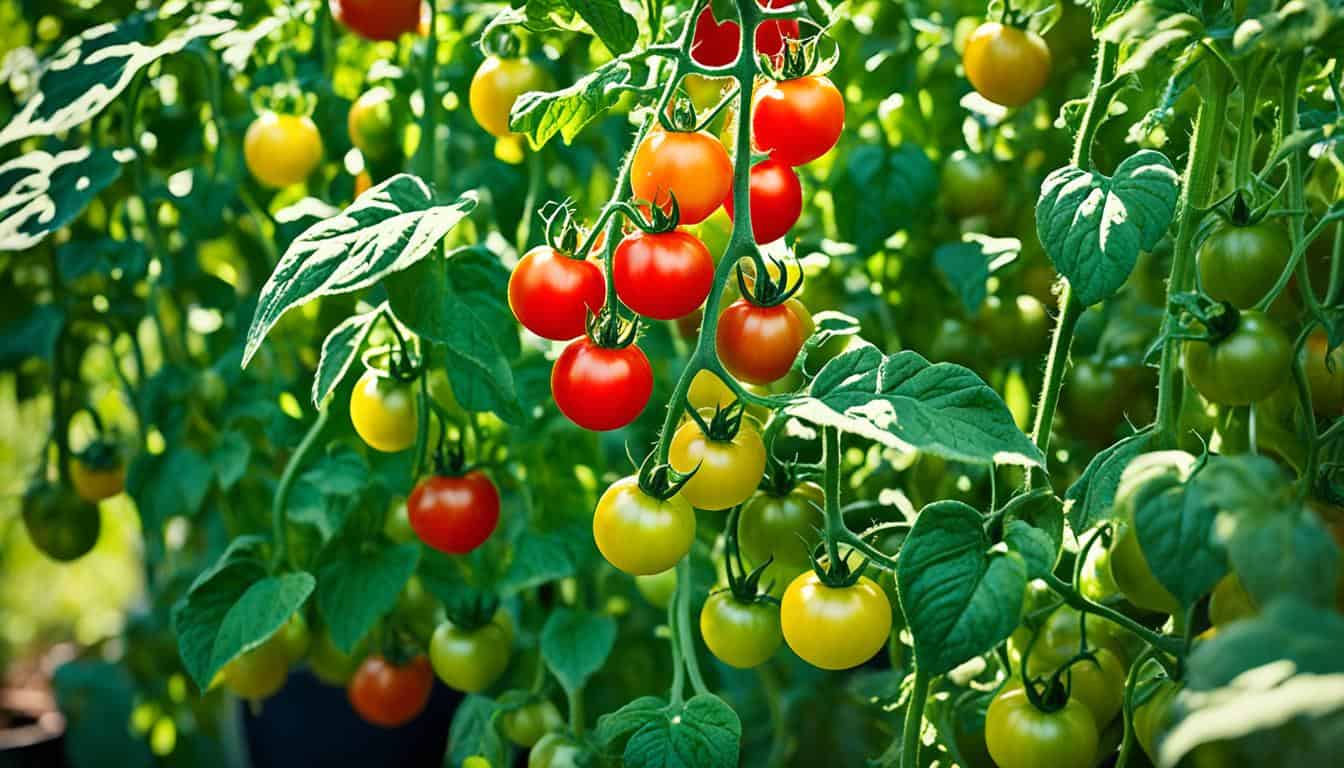
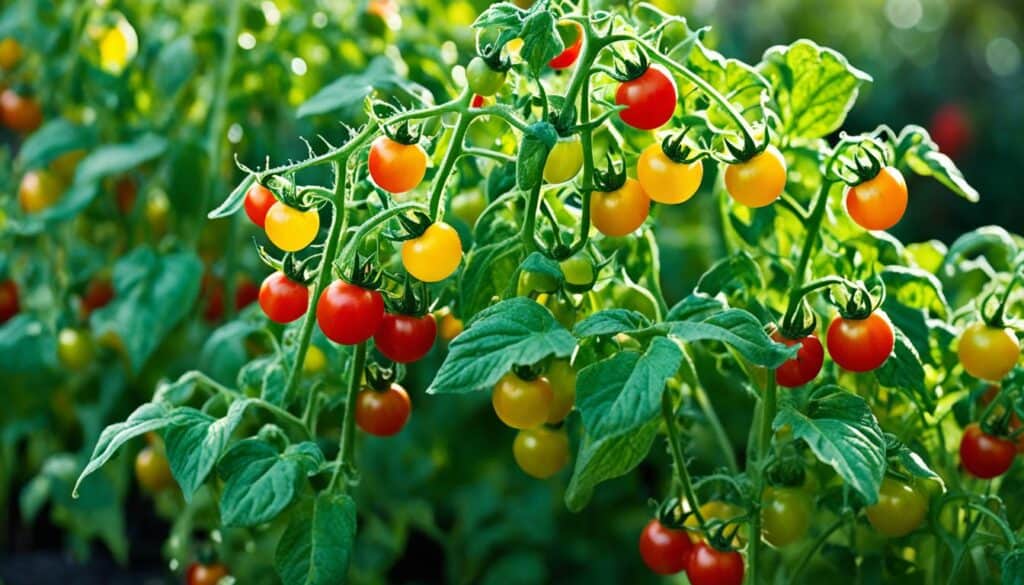


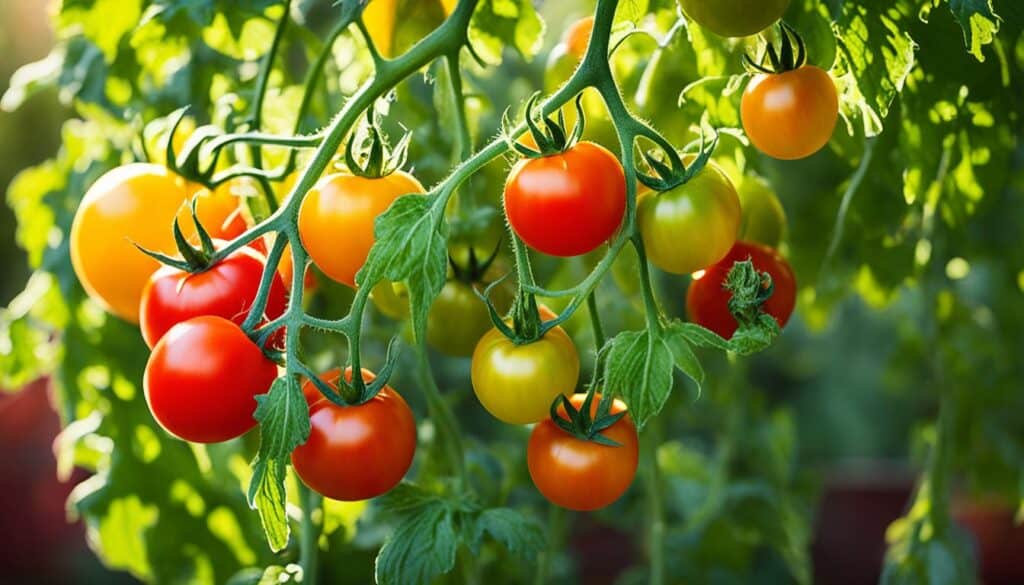
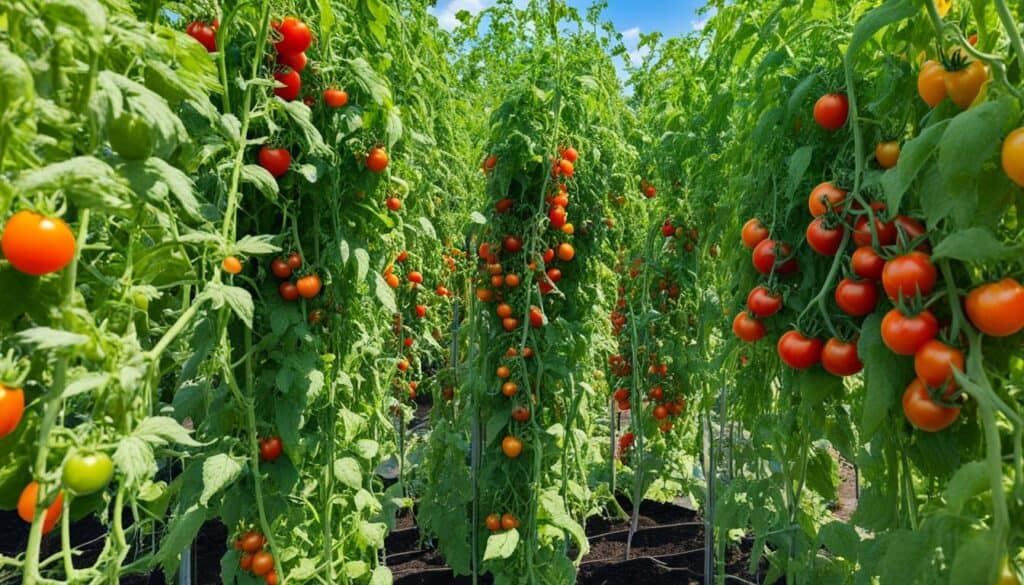


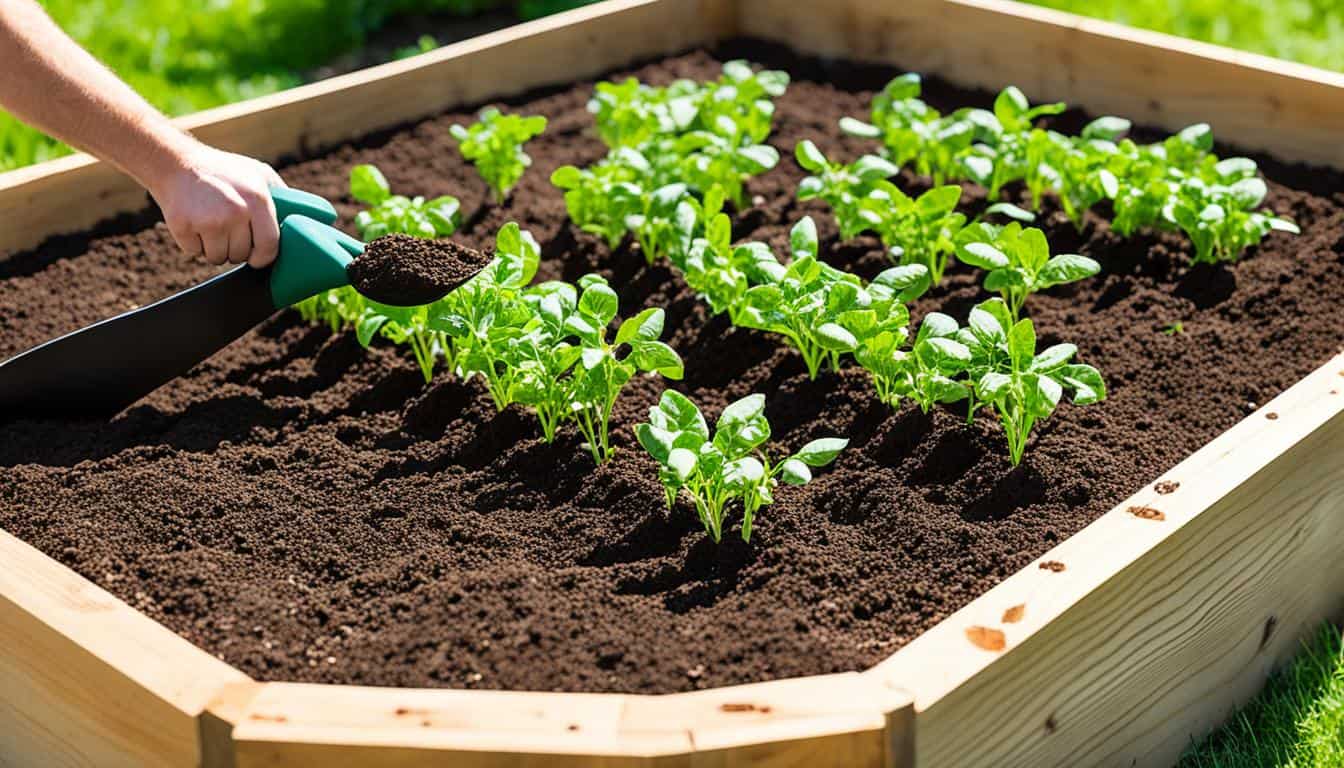
Leave a Reply